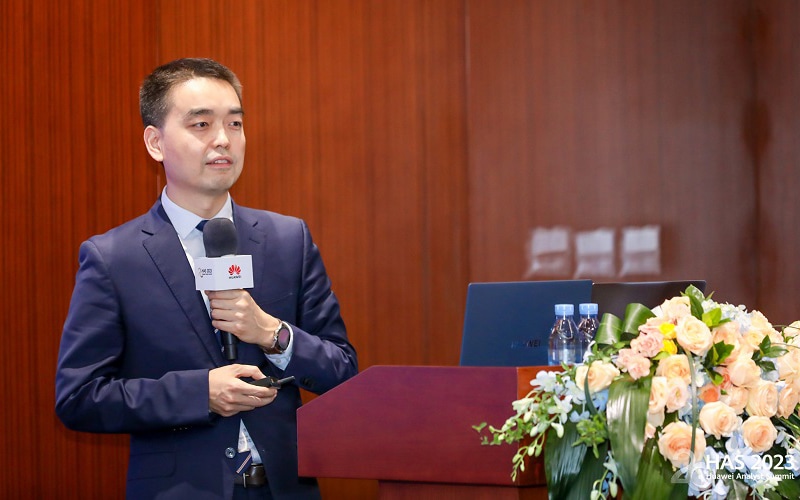[Shenzhen, China, April 21, 2023] At the 2023 Huawei Global Analyst Summit, Huawei elaborated on the concept of 5.5G Core, which features new platforms, new services, and new connectivity, during a 5.5G Core session themed “Leverage Connectivity Value, Enable Full Services.” Huawei also called on all industry partners to promote the development of 5.5G standards and technologies. With joint efforts, we will be able to thrive with digital, striding towards the intelligent world.
 George Gao delivering a keynote speech
George Gao delivering a keynote speech
George Gao, President of Huawei’s Cloud Core Network Product Line, delivered a keynote speech at the session. He pointed out that as 5G development continues to gain momentum, the commercial value of 5G is becoming plainer to see. This stimulates the growth of new services, which in turn poses more stringent requirements on networks. To address this, Huawei proposes the innovative concept of 5.5G Core, aiming to maximize the value of 5G with new network platforms, new services, and new connectivity.
New Platforms
Telco cloud has become one of the most important infrastructures in the mobile communications field. Over the next few years, this infrastructure is expected to shift to containers. Huawei believes that a carrier-class, fully convergent telco cloud architecture is the best choice in the 5.5G era, as such an architecture can support and manage both VMs and containers even if they co-exist. This deterministic architecture can keep up with the uncertain pace of container-oriented evolution. With resources, management, and deployment all converged, the new telco cloud platform lays a solid foundation for 5.5G Core services.
New Services
5.5G Core is essential for enabling various services, regardless of whether they are for individuals, homes, or enterprises. For individual users, IMS Data Channel and the NG-RTC architecture are introduced. On top of this, operators can provide New Calling services such as fun calling and real-time translation, transforming the calling experience from voice-plus-video to intelligent interactions. For homes, ubiquitous connection capabilities are leveraged to enable more audio and video applications, upgrading the video experience from single-screen to multi-screen and social interactions — for people watching videos, this offers a completely new level of experience. As for enterprises, MEC to X enables all kinds of service scenarios across a multitude of industries. Thanks to the ultra-distributed and fully interconnected edge network architecture, users can access private networks anytime, anywhere.
New Connectivity
Connectivity is the foundation for digitalization, and networks are the core of connectivity. For consumer-oriented connectivity, XR is growing rapidly. To propel XR into widespread adoption, technologies such as intelligent scheduling, intelligent identification, and capability exposure have been gradually standardized. For IoT, lightweight architectures and protocols for the connected devices are introduced, drastically reducing the complexity and power consumption of these devices. With this, mobile networks can better support the ever-increasing number of emerging IoT services. In terms of Internet of Vehicles, the network is improved to stay intelligent and sense various types of information in order to facilitate network-vehicle collaboration, embracing the era of intelligently networked vehicles.
With enhanced connectivity and strengthened network capabilities, 5.5G Core will enable a full range of services, and continuously unlock new service scenarios and new experiences. Without doubt, it will catalyze service innovation. Huawei will continue to work with industry partners to innovate and strive for new business with 5.5G Core.
IMS: IP Multimedia Subsystem
MEC: Multi-access Edge Computing
PR Archives: Latest, By Company, By Date